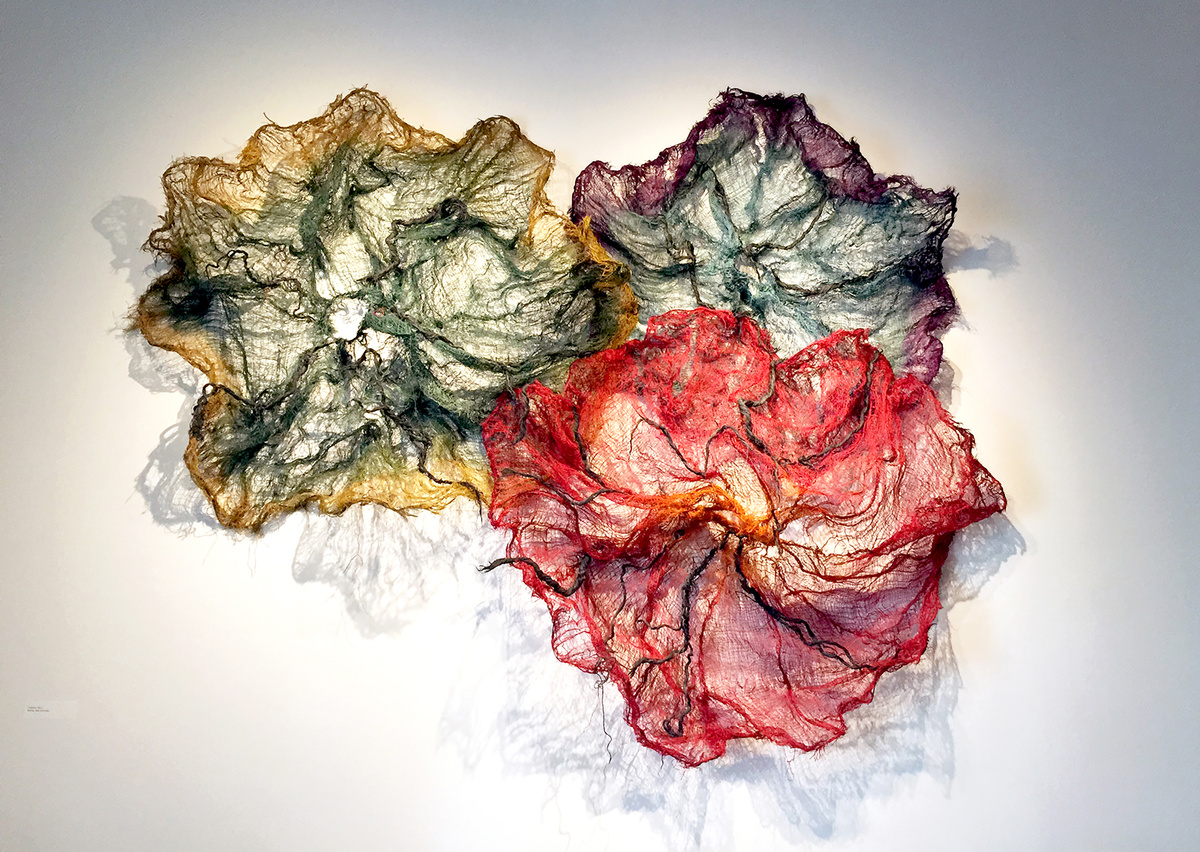Sustainable Art Collecting: The Green Movement in African Art
There exists a certain magic in African art; the raw emotion and rich history infused in each piece creates an undeniably powerful allure. However, as we traverse the 21st century, we must consider the implications of our actions on the planet, and in this case, the sustainability of art collecting. In this journal, we shall delve into the enchanting world of sustainable art collecting, with a particular focus on the green movement in African art. We will explore the impact and development of sustainable practices in art collecting, while examining the myriad ways the African art scene contributes to this global effort.
A. Historical context of African art and the environment
The roots of African art run deep, with nature acting as an integral muse. Traditional African art reflects the continent’s diverse cultures, beliefs, and ecosystems, as seen in the motifs and materials used to create these masterpieces. Sadly, the era of colonialism ruptured this profound connection between African art and nature, introducing foreign materials and techniques that distanced art from its environmental roots.
1. Traditional African art and its connection to nature
Long before the arrival of colonialists, African art was inextricably linked to nature. Artists drew inspiration from their surroundings, using locally sourced materials such as clay, wood, and plant fibers to create works of art. This symbiotic relationship with nature fostered a deep reverence for the environment, as seen in the sculptures of the Yoruba people or the masks of the Bamileke.
2. The impact of colonialism on African art and its relationship with the environment
The colonial era brought about a period of immense change, and African art was not spared. The introduction of foreign materials, such as synthetic paints and metals, altered the trajectory of African art, severing the connection between art and nature. This period of disconnect would prove to be unsustainable, eventually paving the way for the emergence of the green movement in African art.
B. The emergence of the green movement in African art
As global environmental concerns burgeoned, African artists, too, began to recognize the need for sustainable practices in art. The green movement in African art emerged as an effort to reconnect with the continent’s natural heritage and mitigate the environmental impact of art production.
1. The influence of global environmental concerns on African artists
The green movement was a response to the growing awareness of environmental crises, such as climate change, deforestation, and pollution. African artists, realizing the impact of their craft on the environment, sought to adopt sustainable practices and use their art as a platform for change.
2. Key artists and art movements advocating for sustainability
Several African artists have embraced the green movement, infusing their work with environmental messages and adopting sustainable practices. For example, the Ghanaian sculptor El Anatsui employs discarded materials, such as bottle caps and aluminum sheets, to create intricate, large-scale installations. Another noteworthy artist is Zimbabwean painter Virginia Chihota, who focuses on environmental themes and creates her work using plant-based inks and pigments.
C. Sustainable art practices in Africa
In response to the green movement, African artists have embraced a variety of sustainable art practices, ranging from the use of eco-friendly materials to the promotion of environmental awareness through their art.
1. Use of eco-friendly materials and techniques
African artists have returned to the use of natural, locally sourced materials to create their art, eschewing synthetic or harmful substances. By opting for materials such as clay, plant fibers, and natural pigments, artists are reducing their environmental footprint and reviving traditional techniques.
2. Recycling and repurposing in African art
The green movement in African art has also given rise to a generation of artists who utilize discarded materials, transforming them into stunning works of art. For instance, Kenyan artist Evans Mbugua incorporates discarded eyeglasses into his vibrant mixed-media paintings, while Nigerian artist Nnenna Okore repurposes discarded newspapers to create intricate, organic sculptures. These artists demonstrate that beauty can be found in the most unexpected materials, highlighting the potential for recycling and repurposing in art.
3. Promoting environmental awareness through art
African artists are using their work as a platform to raise environmental awareness and foster a greater appreciation for nature. One notable example is South African artist Jane Alexander, whose haunting sculptures of human-animal hybrids address issues such as deforestation and habitat loss. By tackling these pressing environmental issues, artists are playing a crucial role in inspiring change and promoting sustainability.
D. Sustainable art collecting
As the green movement gains traction, sustainable art collecting is becoming increasingly important. Galleries, museums, and collectors are recognizing the need to support and promote sustainable art practices, while embracing the potential of digital technology to further these goals.
1. Criteria for sustainable art collecting
Sustainable art collecting involves considering the environmental impact of the art, including the materials used, the methods of production, and the transportation of the pieces. Collectors can support sustainability by seeking out artists who prioritize eco-friendly practices and by ensuring that the organizations they purchase from adhere to ethical guidelines.
2. The role of galleries, museums, and collectors in promoting sustainability
Galleries, museums, and collectors play a pivotal role in promoting sustainable art practices. By showcasing and supporting environmentally conscious artists, they can help raise awareness of the green movement in African art and encourage others to follow suit. Furthermore, they can lead by example, adopting sustainable practices in their own operations and actively promoting environmental stewardship within the art world.
3. The impact of digital technology and online platforms on sustainable art collecting
The advent of digital technology has revolutionized the art world, offering new opportunities for sustainable art collecting. Online platforms enable collectors to view and purchase art without the need for physical transportation, reducing the environmental impact associated with shipping and handling. Moreover, digital technology allows for the preservation and dissemination of art, ensuring that future generations can appreciate these works without causing further environmental degradation.
E. Challenges and opportunities in sustainable art collecting in Africa
Despite the growing awareness of sustainability in the African art scene, there remain several challenges that must be addressed. At the same time, these challenges present opportunities for growth and innovation within the art market.
1. The economic and social barriers to sustainable art collecting
Sustainable art collecting can be hindered by economic and social barriers, such as limited access to resources, a lack of education, and cultural resistance to change. To overcome these barriers, it is essential to invest in education and infrastructure that supports sustainable art practices, while fostering a culture of environmental stewardship.
2. The potential for growth and innovation in the African art market
The green movement in African art presents a wealth of opportunities for growth and innovation. By embracing sustainability, African artists can carve out a unique niche in the global art market, attracting collectors who value both the aesthetic and the environmental aspects of their work. Additionally, the growing interest in sustainable art collecting can serve as a catalyst for the development of new materials, techniques, and technologies that further advance the cause of sustainability in the art world.
The green movement in African art serves as a testament to the power of art as a vehicle for change. Sustainable art collecting not only highlights the importance of environmental stewardship but also showcases the creativity, resilience, and innovation of African artists. By embracing sustainable practices, the African art scene can contribute significantly to global environmental awareness and action.
The future of sustainable art collecting in Africa is brimming with potential. As more artists adopt eco-friendly practices, galleries and collectors follow suit, and digital technology continues to evolve, the African art market can become a beacon of sustainability within the global art community. However, achieving this vision requires continued collaboration, innovation, and investment in education and infrastructure.
In conclusion, the green movement in African art represents a crucial step towards a more sustainable and environmentally conscious future. By embracing sustainable art collecting, we can not only preserve the beauty and cultural significance of African art but also ensure that it remains a cherished and celebrated part of our global heritage for generations to come.
FAQ - Sustainable Art Collecting: The Green Movement in African Art
Q: How can art be more sustainable?
A: Art can be more sustainable by incorporating eco-friendly materials, using traditional techniques, recycling and repurposing materials, reducing waste during production, and promoting environmental awareness through the themes and messages portrayed in the artwork. Additionally, artists, collectors, galleries, and museums can adopt sustainable practices in their operations, such as using energy-efficient lighting, minimizing transportation, and supporting local artists.
Q: What are the types of sustainability in art?
A: Sustainability in art can be broadly categorized into three types: environmental, social, and economic sustainability. Environmental sustainability focuses on reducing the environmental impact of art production, while social sustainability emphasizes community involvement, fair labor practices, and cultural preservation. Economic sustainability aims to create a thriving, resilient art market that supports artists and contributes to local economies.
Q: What is an example of sustainable art?
A: An example of sustainable art is the work of Ghanaian sculptor El Anatsui, who creates large-scale installations using discarded materials such as bottle caps and aluminum sheets. His art not only raises environmental awareness but also demonstrates the potential for recycling and repurposing in the art world.
Q: What is the most eco-friendly art medium?
A: Eco-friendly art mediums include those that use natural, renewable, or recycled materials, such as plant-based inks and pigments, clay, wood, and fibers. The most eco-friendly art medium depends on the specific materials used, the techniques employed, and the overall environmental impact of the production process.
Q: What is the most sustainable form of art?
A: The most sustainable form of art is one that prioritizes environmental, social, and economic sustainability. This may involve using eco-friendly materials, supporting local communities, preserving cultural heritage, reducing waste, and promoting environmental awareness through the art itself.
Q: What are the 7 key areas of sustainability?
A: The 7 key areas of sustainability are: 1. Energy and emissions 2. Water and wastewater 3. Waste and materials 4. Land and ecology 5. Health and wellbeing 6. Community and culture 7. Economy and employment These areas can be applied to the art world by adopting sustainable practices in art production, collection, and display, as well as supporting initiatives that promote environmental and social responsibility within the industry.
Q: What are the 4 A’s of sustainability? How do I start an affordable art collection?
A: The 4 A's of sustainability are Affordability, Accessibility, Authenticity, and Awareness. To start an affordable art collection, consider the following steps: 1. Set a budget and define your collecting goals. 2. Research artists and art movements that align with your values and interests. 3. Explore alternative art spaces, such as local galleries, online platforms, and art fairs, where emerging artists often showcase their work at more affordable prices. 4. Engage with the art community, network with other collectors, and learn from their experiences. 5. Prioritize eco-friendly and sustainable art practices when making purchasing decisions.
Q: Why collecting art is good?
A: Collecting art is good for a variety of reasons: 1. Personal enrichment: Art can enhance your life by providing visual beauty, emotional resonance, and intellectual stimulation. 2. Cultural preservation: Collecting art helps preserve cultural heritage and supports the continuation of artistic traditions. 3. Supporting artists: By purchasing art, collectors support artists financially and provide




 No products in the basket.
No products in the basket.